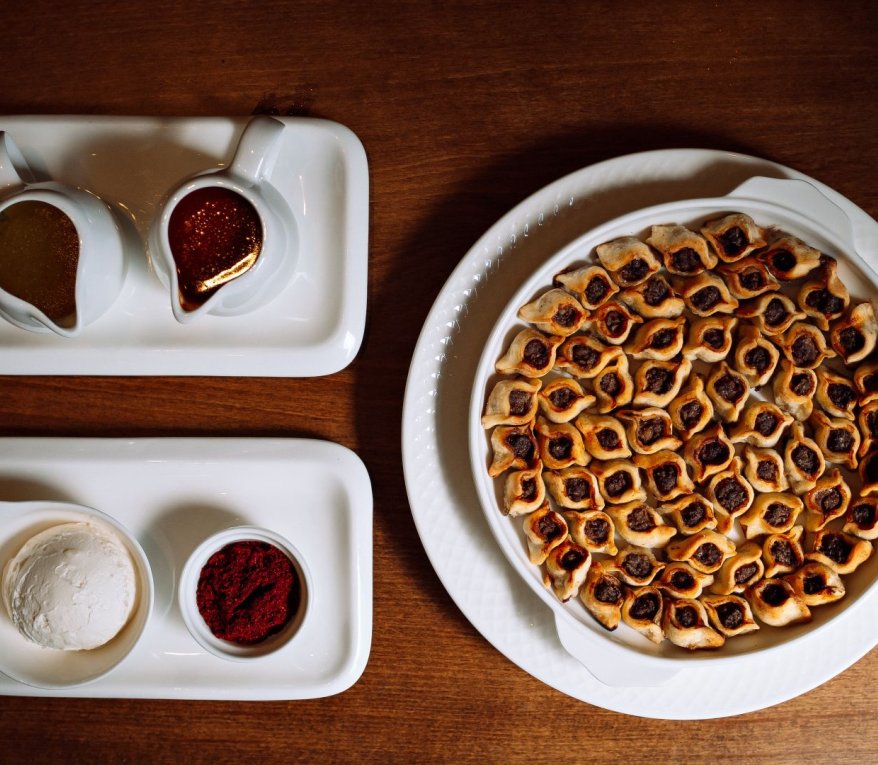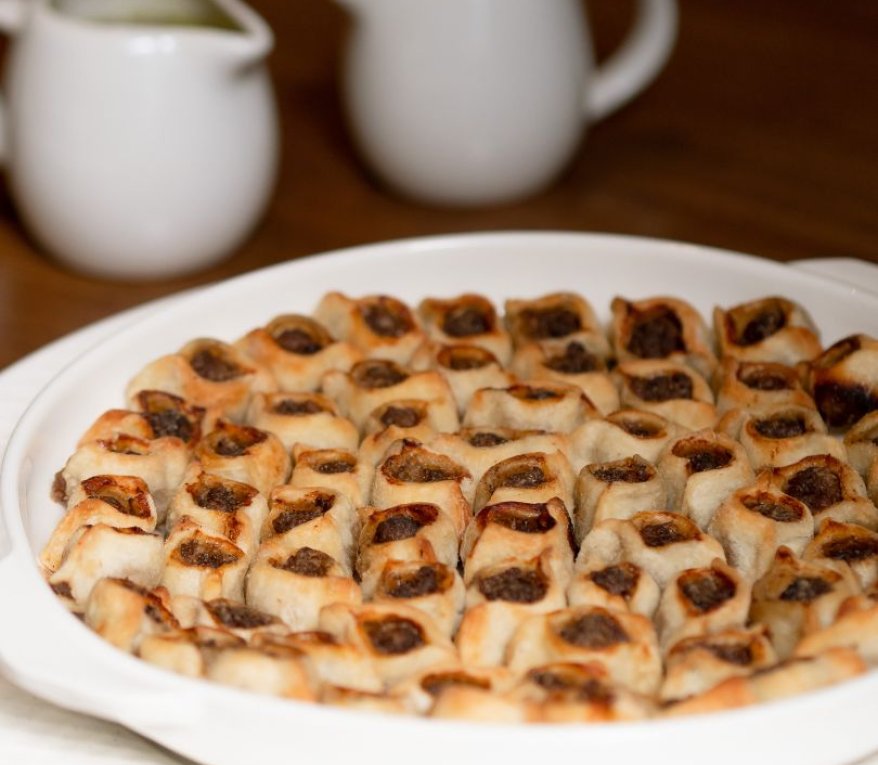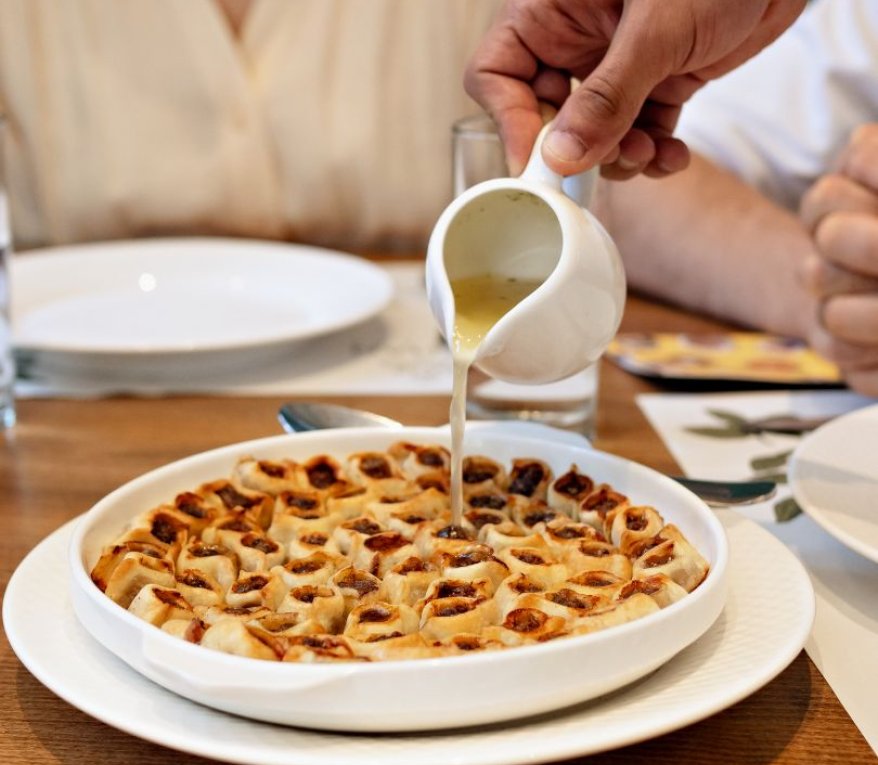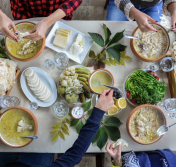You’ve just spent the better part of the day strolling the streets of Yerevan, admiring its architecture, and discovering its hidden gems. All that adventuring has probably worked up quite the appetite, which means it’s time to eat – but where? Armenia’s capital city is chock-full of restaurants both old and new that serve all kinds of cuisine, from classic American to Asian Fusion to Middle Eastern. But since you’re in Armenia, we say go Armenian. And nothing is more Armenian than a heaping plate of manti.
Manti are crispy meat dumplings served in broth or tomato sauce and drizzled with matsun[maht-soon] or Armenian yogurt. Food historians generally agree that it made its way to Armenia from East Asia via the Old Silk Road, and there are versions of it across the kitchens of the Caucasus and Balkans, Central Asia, Afghanistan, and among Chinese Muslims. According to one source, Turkic and Mongol horsemen on the move would carry frozen or dried manti on their travels, as it could be quickly boiled over a campfire.
There are also those who consider it possible that manti actually originated in the Middle East and then made its way eastward to China instead of the reverse. An interesting Silk Road connection is that the word manti is also a cognate for the Korean word for dumpling – ”mandu.” Size and shape of manti also varies significantly depending on the geographical location. Armenian manti are usually small, boat-shape dumplings that are open-faced, and baked before being served with garlic matsun and spiced with sumac and mint, sometimes with or without a chicken or tomato broth. In contrast, manti in Central Asian cuisines are usually larger in size and served steamed or even fried, and filled with minced lamb, beef, or horse meat.
Manti is
known as a Western Armenian dish. What exactly does that mean? Armenia
once spanned a much larger geographical area than it does today, with
different parts falling under the rule of different empires throughout
history. There was Eastern Armenia, which fell under Persian rule,
followed by Russian, and there was Western Armenian, which fell under
Turkish Ottoman rule. This divide has resulted in various differences
reflected in elements of culture like cuisine.

Typically,
people divide Armenian cuisine into two parts – Eastern and Western.
Eastern Armenian is used to describe the flavors and dishes that are
local to modern-day Armenia and Artsakh, as well as the Armenians of
Georgia and other regions. Western Armenian food, on the other hand, is
eaten by diasporan Armenians who took the traditional dishes of Western
Armenia (or the eastern part of modern-day Turkey), and brought them to
new Armenian communities in places like Syria and Lebanon. Thanks to the
repatriation of these diasporans to Armenia, starting in the Soviet Era
and continuing to this day, the country now boasts a rich and diverse
set of cuisines that can all be called Armenian.
Manti is
a beloved dish among Armenians in the country and around the world, and
now’s your chance to try it for yourself. Of course, everyone has their
opinion on which place has the best, so we’ve compiled a list of
favorite spots in town to try this favorite food.
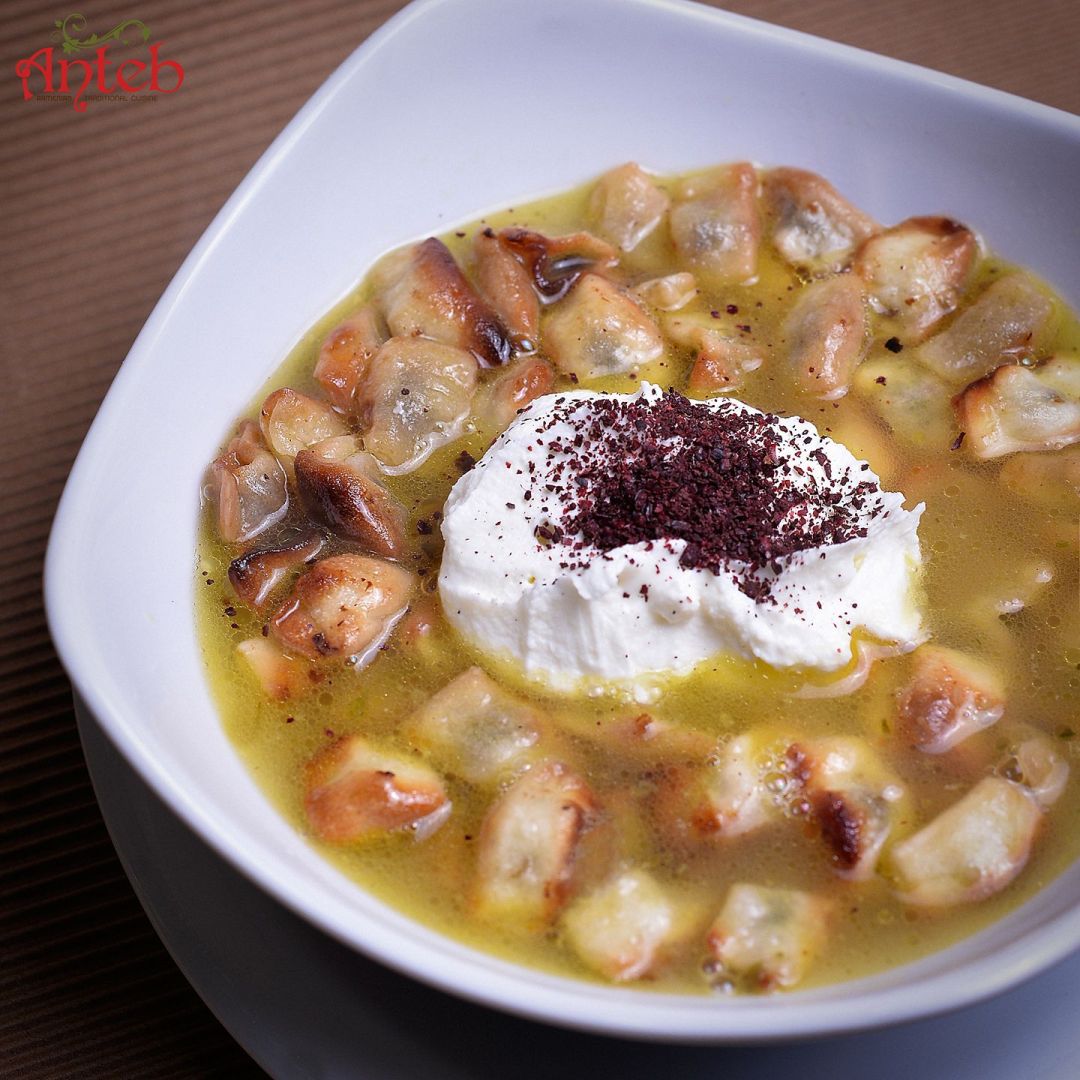
Anteb | Yeznik Koghbatsi 30
Opened by Armenian repatriates from Lebanon, Anteb is a favorite spot among locals and visitors alike for its delicious and affordable Western Armenian menu. The space is small, cozy, and almost always packed – which says a lot about its popularity. We especially love Anteb for its manti, which is served as a warm, hearty soup topped with garlic matsunand sumac and sold for just 2,400 AMD a bowl.
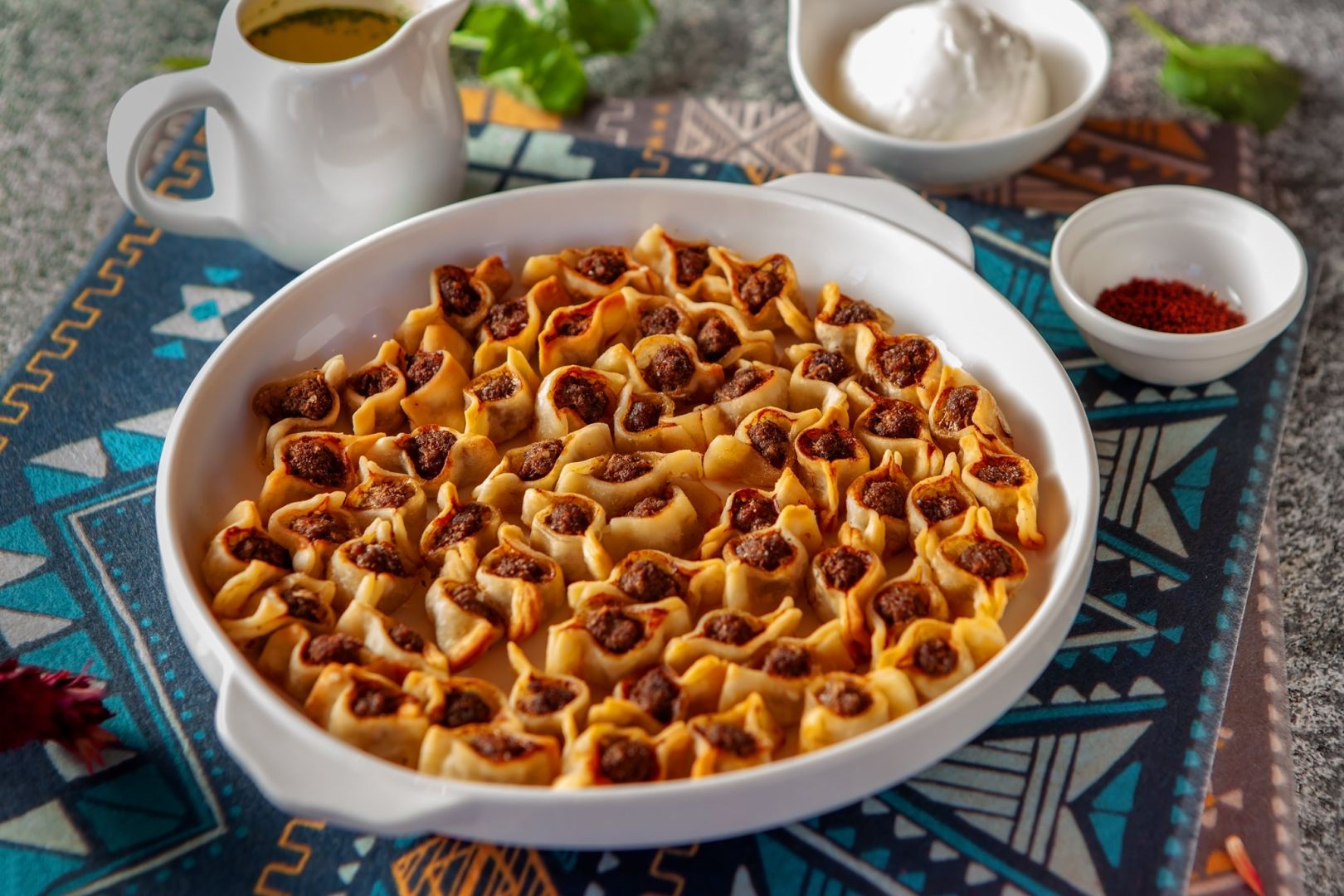
Rehan | Isahakyan 46/1
Another restaurant opened by Armenian repatriates from Lebanon, Rehan is known for both its tasty food and its bright atmosphere. During the warmer months, its courtyard is decorated with string lights and filled with restaurant goers catching up with old friends and new. The manti here, which is featured as a part of our Yerevan Gastrotrip, a walking tour of Yerevan that samples the best dishes Armenian cuisine has to offer, is crisp and served with chicken broth, matsun, and sumac. For any vegan or vegetarians eager to try the dish, there’s also spinach manti, which is just as crisp and oh-so-tasty.

Artushi Mot | Movses Khorenatsi Street 20
This traditional Armenian restaurant has been around for years, but we only just recently discovered how great its manti is. Made with a flakier dough and filled with juicy, spiced meat, the manti at Artushi Mot could give some of the better known establishments a run for their money. It is often said that the size of the manti is indicative of the cook’s skills, with smaller dumplings uniform in size representing a skilled cook, and larger dumplings or dumplings of varying sizes signifying laziness. With small, delicately folded dumplings, we can say with certainty that the chef at Artushi Mot is one skilled cook when it comes to manti.
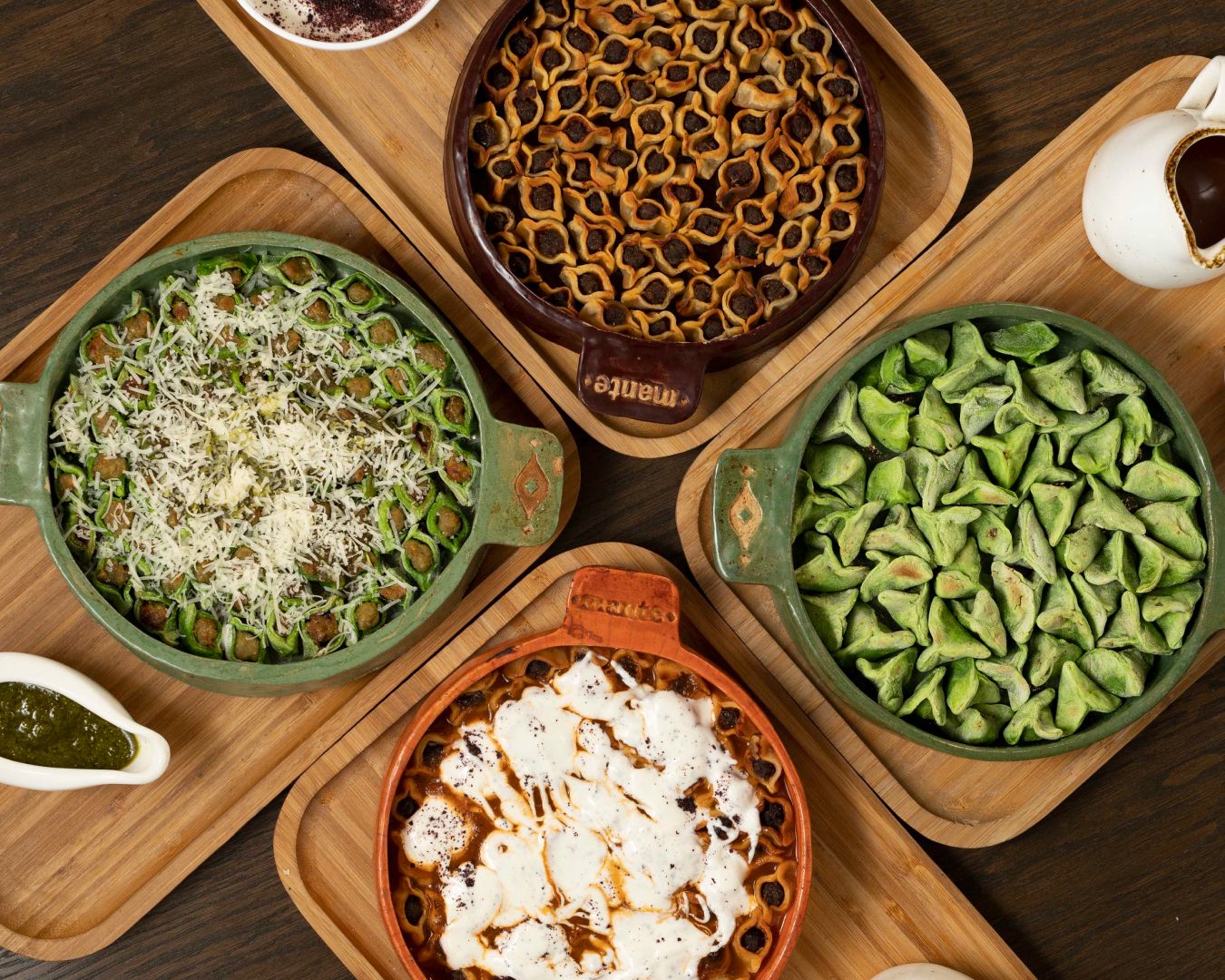
Mante | Mesrob Mashtots 37
Armenians love manti so much, they’ve even opened a restaurant dedicated to it. At Mante, you’ll find a number of spins on the traditional dish, like chicken manti with pesto and parmesan, sujukh manti(a spicy, air-dried local sausage), and spinach manti. By the way, as the process of making manti is very labor-intensive and time consuming, it’s also a favorite group activity. For centuries, Armenian friends and families have been gathering to make mantitogether while catching up and enjoying each other’s company. With so many options available at Mante, we like to think that the cooks work together to produce all those little dumplings.
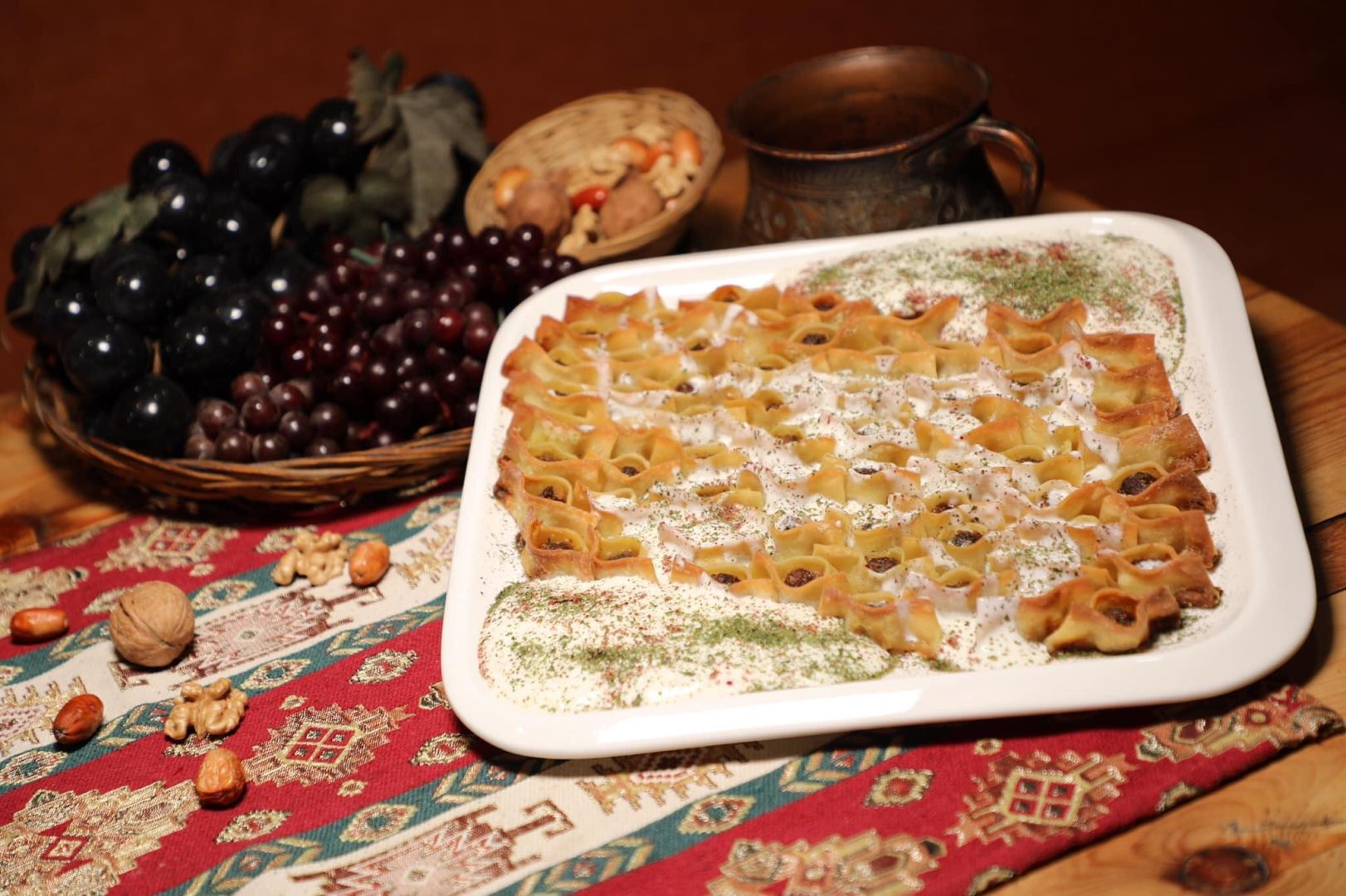
Mer Taghe | Tumanyan 21/1
Opened in 2001, Mer Taghe is another favorite spot in town for Armenian comfort food. Order the manti there, and you’ll get a plate of warm, crispy dumplings topped with lots of garlic matsun, sumac, and mint. Mer Taghe’s manti is served without any sauces or broth, perhaps to keep the focus on the super crispy dumplings themselves.

Byblos | Aram 64, 118
Another favorite Lebanese Armenian restaurant is Byblos, whose manti is cited by many as the best in town. As is traditional, the crispy, meaty dumplings are served on round trays in circular patterns, making the dish all the more mouthwatering. The manti here is topped with a tomato broth, FYI.
Wherever you choose to try this favorite Armenian dish, you’re sure to have a tasty time – as long as you come with an open mind and an empty stomach!
